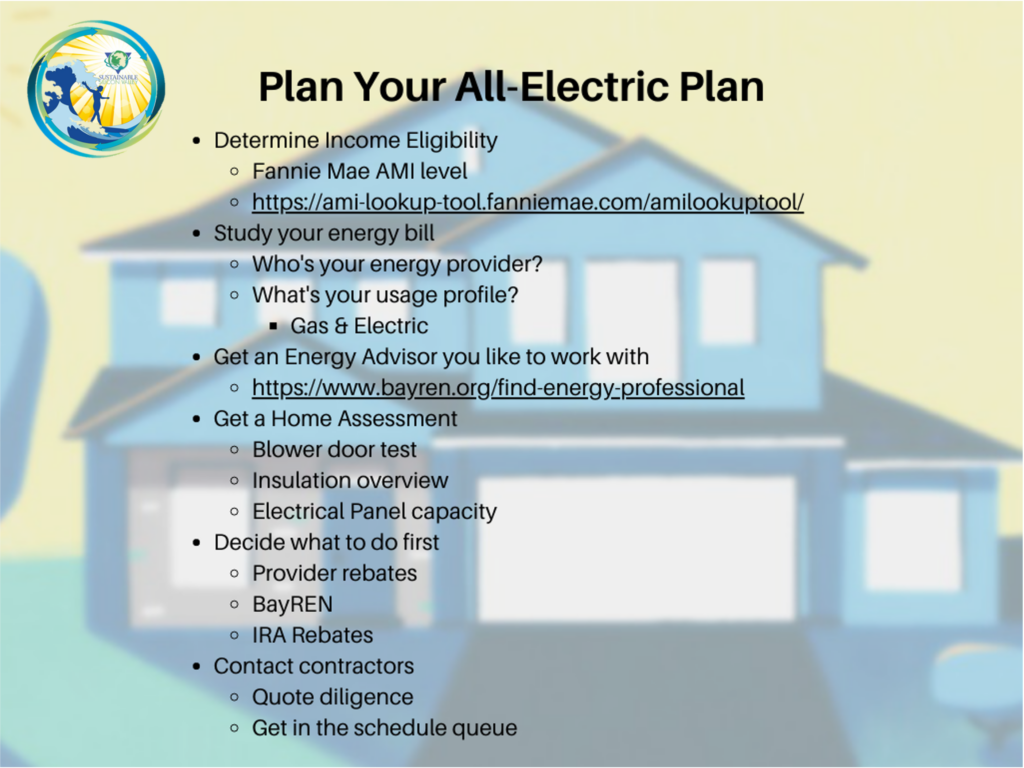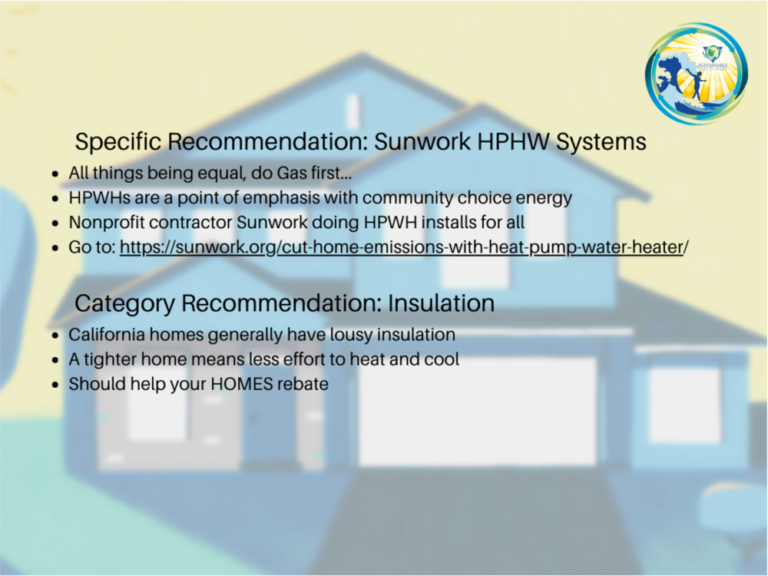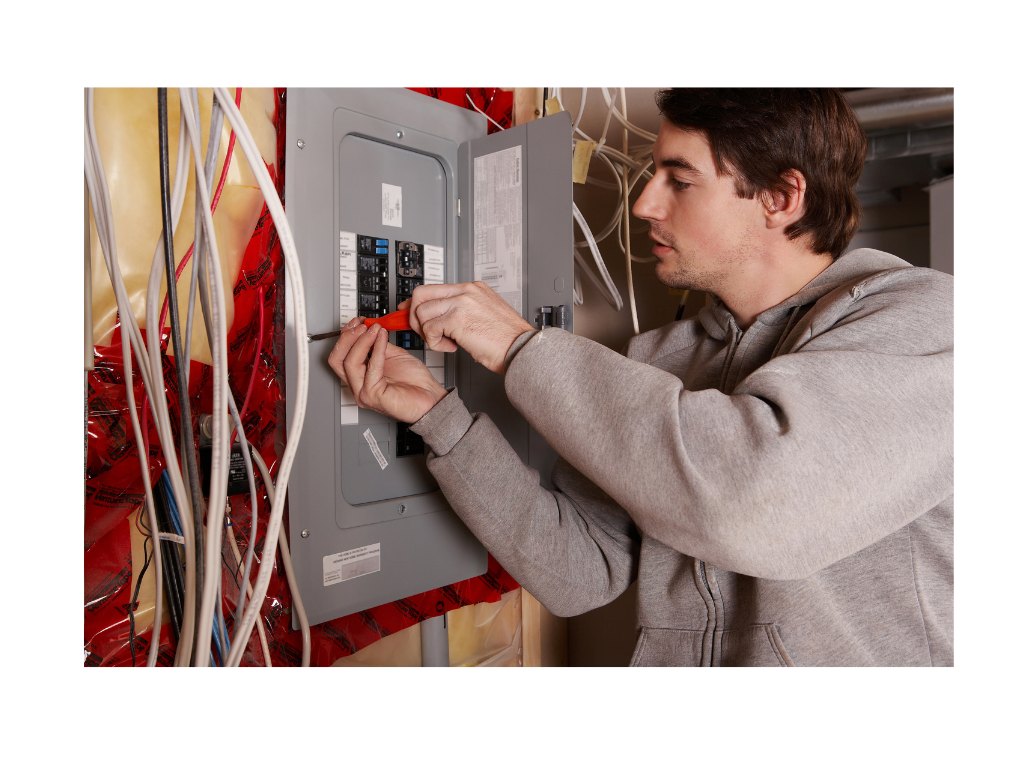Earth Month Resolution: Start Your IRA Electrification Plan Now!
This is the second part of our series on the Inflation Reduction Act & You; the first part “Inflation Reduction Act Update: Patience, Patience…” is here.
The passage of the Inflation Reduction Act (IRA) was a groundbreakingly Big Deal that will have big impacts on your sustainable home and the energy infrastructure around you, BUT it will play out over years. Smart consumers will be rewarded by devising a plan. The federal government, through money available to all 50 states, will be providing tax breaks and rebates to homeowners and renters throughout the country to electrify their homes. This is crucial for the environment, our health, and supporting the local economy, but it can also save you money as well as increasing the value of your home. To take advantage of these funds, you need a plan. This article will help you get started.
Gas- and oil-burning furnaces are ready to be replaced by heat pumps; appliances like stoves and dryers that use natural gas (aka methane) are ready to be replaced by modern electric equivalents. The 117th Congress passed the extensive environmental parts of the IRA in August, 2022 to assist and encourage homeowners and renters to work through this energy transition.
The High-Efficiency Electric Home Rebate Act (HEEHRA) provides $14,000 per home to low- and moderate-income households for efficient heating, cooling, and appliances. These rebates, when they are implemented by states, will be point-of-sale rebates, meaning the rebate is applied at the store, thus avoiding any cash outlay. To find out if your home qualifies for these rebates, use an online tool such as this one from Fannie Mae that can determine how your income compares to your Area Median Income (AMI) according to HUD. If your household income is below 80% of AMI, your home qualifies for full (100% of cost) rebates on certain electric appliances and heat pumps. If your income is between 80% and 150% of AMI, your home qualifies for 50% rebates on the same electric appliances and heat pumps.
Homeowners and renters in multi-family buildings can also take advantage of the Energy Efficient Home Improvement Credit (EEHIC), which provides a 30% annual tax credit on a home energy assessment up to $150. It also stipulates 30% tax credits up to $1,200 annually for weatherization improvements such as windows and insulation. It provides up to $2,000 annually in tax credits for heat pump water heaters and air conditioners.
The Bay Area Regional Energy Network (BayREN) provides simple online search tools for finding contractors, home energy advisors, and home energy score assessors. We definitely recommend finding an advisor who you work well with and who can help you with your energy plan! These BayREN tools should help you get a free consultation.

Measurement for Good Management
BayREN: Find an Energy Advisor
Professionals who perform home energy audits use specialized equipment, such as a blower door, thermographic scanners, furnace efficiency meters, infrared cameras, and surface thermometers. You can use this tool from BayREN to find a professional, and your electricity provider (PCE, SVCE, PG&E, CleanPowerSF, SJCE, etc.) may provide tools as well.
HEEHRA goes even further than EEHIC in providing rebates to those with qualifying incomes. For example, homeowners can upgrade the following items:
- electrical panel (up to $4,000)
- wiring (up to $2,500)
- home insulation, ventilation, and sealing (up to $1,600)
- heat pump water heater (up to $1,750)
- electric or induction stove (up to $840)
- heat pump heating & cooling system (up to $8,000)
- heat pump dryer (up to $840)
Keep in mind that you may also qualify for more incentives provided by regional or local providers such as PCE, SVCE, CleanPowerSF, SJCE, etc.
Prepare some questions for your home energy advisor (and possibly for theauditor who performs your assessment). Do you need insulation, ventilation, or weatherization improvements? Does your home electrical panel need a greater capacity, especially if you’re adding an EV charger? Is any rewiring required? Which appliances do you need to upgrade? Is a heat pump with less power than your current furnace a smart choice with the efficiency improvements you’ll make (or have made)? Is home solar an option you should consider?
You’ll probably also want to discuss the HOMES (Home Owner Managing Energy Savings) Rebate Program. HOMES measures (or models in software) the energy efficiency of your home and compares it to past calculations. It provides up to an $8,000 rebate if your home will achieve a 35% improvement in its efficiency or up to a $4,000 rebate for a 20% improvement. Low- and moderate-income households receive the largest rebates. It’s probably best to do this as the last step, after your home has become as efficient as possible. Here is the California link.
You might find that it makes sense to space these purchases out over multiple years. Start with any insulation and sealing that you and your advisor discussed. You might decide to upgrade your electrical panel (and wiring if needed) before new appliances: if you’re scheduling aggressively, perhaps a heat pump water heater and induction stove in 2023. In 2024 or the following years, you might follow with a heat pump heating and cooling system and an electric clothes dryer.
Finally, let’s look at the tax credits that come with electric vehicles and chargers. A Level 2 charger is covered by the Alternative Fuel Vehicle Refueling Property Credit, which gives you a one-time tax credit up to $1,000.
A new condition for EV tax credits has been added in 2023: in order to qualify for the Clean Vehicle Credit, the vehicle must undergo final assembly in North America. But beginning in 2024, you’ll be able to transfer this credit directly to the dealer for payment, simplifying the purchase process. Single taxpayers making $150,000 or less (or heads of household making $225,000 or less, or those filing jointly making $300,000 or less) can receive a $7,500 tax credit for new EVs (smaller cars that cost up to $55,000; SUVs, trucks, and vans up to $80,000). Single taxpayers making $75,000 or less can receive a $4,000 tax credit for used EVs that cost up to $25,000.

Overall, the incentives provided under the IRA can provide several benefits for taxpayers who upgrade to energy-efficient appliances, vehicles, and heat pumps. By reducing your energy bills, contributing to a cleaner environment, increasing the value of your home, and saving money on your taxes, taking advantage of these incentives can be a wise financial decision.
Rewiring America Calculator: How much money can you get with the Inflation Reduction Act?
Do-It-Yourself Home Energy Assessments
Energy Saver 101 Infographic: Home Energy Audits
Inflation Reduction Act Energy Saver 101 Infographic: Home Energy Audits
IRA Benefits: Millions Of Efficient Electrified Buildings
A Consumer Guide to the Inflation Reduction Act | NRDC
Inflation Reduction Act Residential Energy Rebate Programs in California
Could you get home energy and EV incentives under the climate law?
